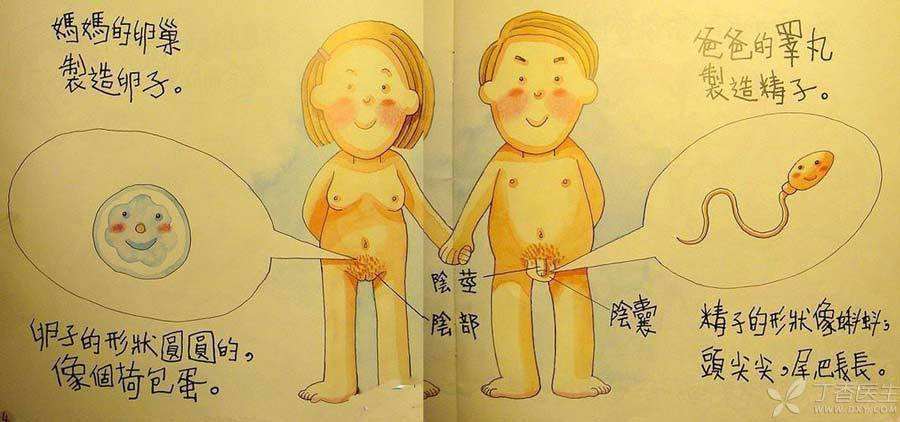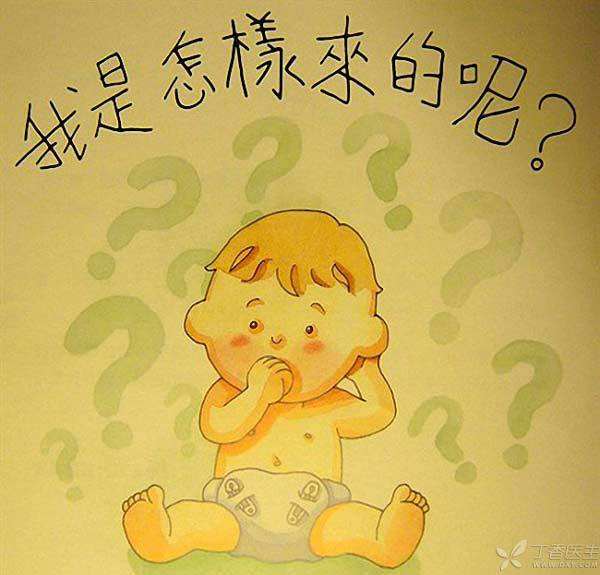
Ding Ma said that after the baby is two or three years old, parents may encounter some unexpected things. The child either points to the penis and asks you if this is what? Or point to yourself and ask, “Where was I born?” ]
If parents are not prepared, the situation may be quite embarrassing. Therefore, we must prepare for a rainy day and learn some dry goods in advance.
Therefore, obstetricians and gynecologists from Australia will tell you today how the Australian Government recommends sex education for children of different ages.
Sex education is not fixed.
In fact, children’s sex education cannot be solved simply by giving children a lesson, but should be a continuous and dynamic process. With the increase of children’s age and understanding ability, the content of sex education should also change accordingly.
In daily life, it should be an important part of family sex education to correctly answer sex-related questions for children and transmit correct gender knowledge according to age.
If parents do not attach importance to it, they may miss the opportunity for their children to establish correct knowledge and ideas.
The most terrible thing is that if you don’t say it, naturally someone will say it for you that the child may get it from other channels in the future, such as the intricate and mixed content on the Internet. Do you dare to let him see it?
Basic Strategies of Sex Education

Children’s sex education should be carried out as early as possible and imperceptibly in daily life.
Have a natural attitude and be frank and relative.
When some parents talk about sexual knowledge with their children, their own level will be very sad.
Traditional education and ideas make us afraid to say those words that were normal, but this is the basis of sex education. Parents should first desensitize themselves and boldly say the names of various sexual organs and concepts of various sexual knowledge.
When we can’t answer some questions asked by the child at the moment, or we don’t know how to answer them most appropriately, we can frankly tell the child that we don’t know the answer yet, but we will check it and then tell him again, instead of jumping over or passing on incorrect knowledge in panic.
Use the correct name
This is the most basic point, and there are also many parents who have misconceptions that their children are still young and do not need or even should not say the correct name to them.
In fact, in the earliest sex education, the most important message sent by parents is that they are willing to talk about sex knowledge frankly and naturally with their children, so as to avoid negative feelings such as fear or shame of sex or sexual behavior.
Just like learning to walk and speak, young children will begin to learn to know their own body parts very early. When the child points to his own or a certain sexual organ in the picture book and asks if it is what, the parents tell the child the correct name, which is the most primitive sex education.
When discussing sexual knowledge with children, we should try our best to choose the correct words that are simple and suitable for the children’s age, and avoid using surnames or names fabricated by ourselves.
Correct common misunderstandings
When transmitting information about sex or sexual behavior to children, we should first understand what the children have learned and how much understanding they have. For example, through rhetorical questions or questions, observe the children’s understanding ability and understanding level.
In addition, children’s sex education is not only to transfer new knowledge, we should also pay attention to correct some incorrect sex knowledge for children. For example, if the child said that the baby was picked up from the garbage, then such cognition needs to be corrected in time.
Encourage discussion of sex-related issues
When children ask us sex-related questions, we should encourage and affirm them in time so as to better promote the family sex education.
Choose a comfortable way
In addition, our own psychology may also need some preparation.
For example, when talking about sexual knowledge with children, It is very normal to feel uncomfortable or embarrassed. We need a process of self-adaptation and exploration. It is very important to pay more attention and think at ordinary times and find out a comfortable way to talk about sexual knowledge with children. For example, some parents can use picture books, which can help understand and relieve embarrassing feelings.
Different ages, different sex education

0 ~ 2 years old: correct introduction of body organs
Note: Although the baby is still very young, we can try to use the correct words to introduce the body parts for the baby.
In daily life, such as bathing, dressing, should use the correct words for children to introduce body parts. For example: vulva, vagina, breast, nipple, penis, scrotum, testis. When explaining body parts to children, should try to avoid using surnames or self-compiled words.
2 ~ 3 years old: distinguish the difference between men and women,
At this stage, children begin to slowly notice the gender difference between men and women.
Children between the ages of 2 and 3 will be very curious about their own and other children’s body parts, and will begin to notice the difference between men and women.
We can introduce the body parts and the function of each body part for children. When introducing body parts, we can also use relevant picture books to better help children identify the differences between body parts and men and women. For example, tell children: the male baby is penis, the female baby is vulva.
4 ~ 5 years old: curious about where the baby comes from,
Children of this age often ask where the baby comes from.
If the child asks: Where do I come from?
Parents can try to ask: What do you think? This rhetorical question can help parents understand their children’s understanding and the question they really care about and want to ask is what.
Moreover, such a big child can already understand the process of giving birth to a baby: a sperm (similar to a very small seed) and an egg (similar to a very small egg) are combined, and then slowly grow up to become a baby; The baby needs to grow in a place called uterus in the mother’s body.
When answering questions for children, you should try to be as simple as possible, such as:
Q: Where did the baby come from?
A: The baby grew up in their mother’s body. The place where the baby was raised was called the uterus.
Q: How was the baby born?
A: When the baby grows up and matures in their mother’s womb, it will emerge from their mother’s body. The place where it emerges is called vagina.
6 ~ 8 years old: curious about how babies come into being,
Children of this age will want to know how babies are born. If the child asks: How does the baby enter the mother’s womb and grow up? We can still try to ask the children what they think first, so that we can know how much the children already know.
When we answer, we should still follow the principle of being as simple as possible.
For example, to make a baby, we need the sperm provided by men to combine with the eggs provided by women. We think it is more appropriate to say these things that are not suitable or do not know how to express them, so we can pass on sexual knowledge by reading relevant books with our children.
In addition, we don’t have to wait for the child to ask us all the time before trying to answer. In fact, we can also take the initiative to ask the child, [Do you know how the baby is born? How does the baby grow into their mother’s body? ]
It is really not easy to talk about sex with children. Choose a way that both you and your children feel comfortable. Popularize correct sexual knowledge for your children as soon as possible. Don’t wait passively for your children to ask.
